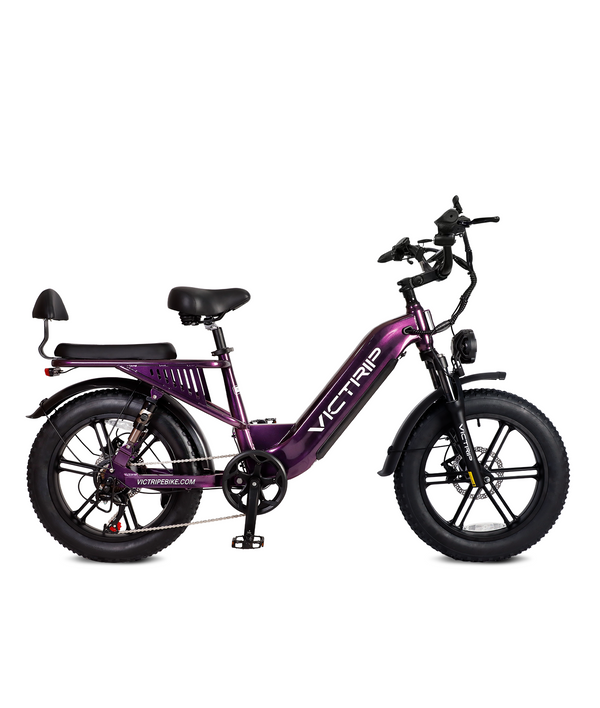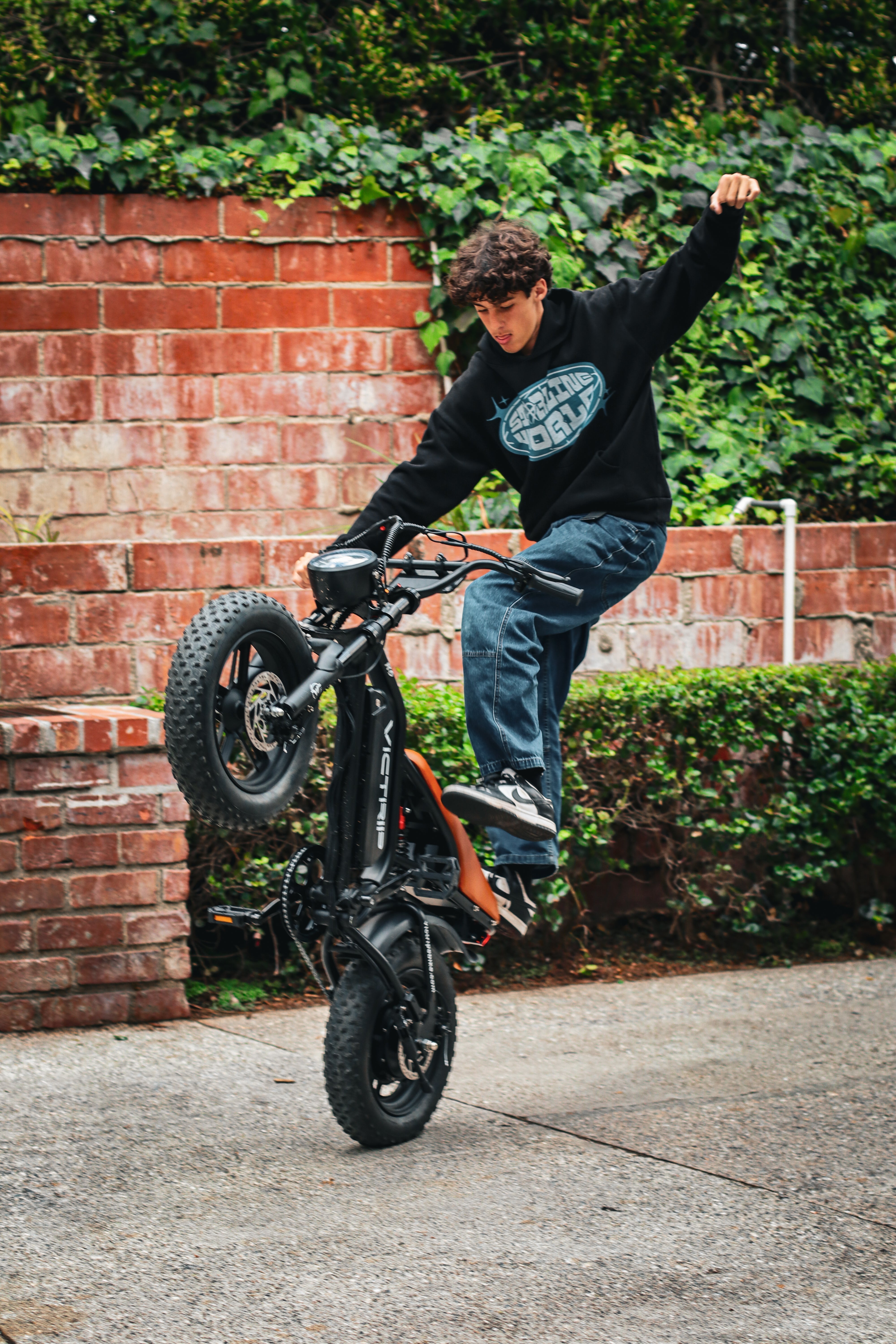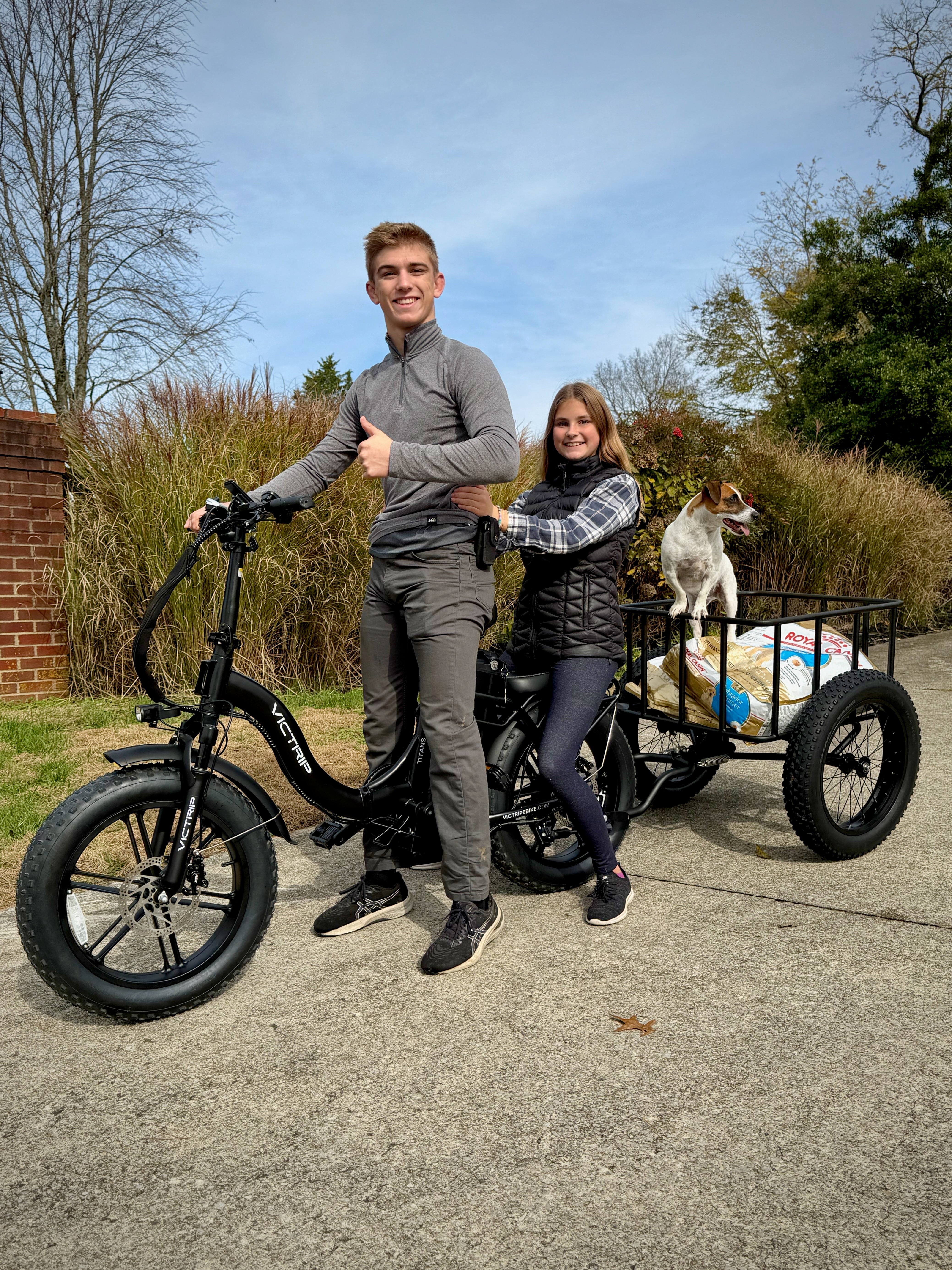This guide is written for older adults, caregivers, and family members who want clear, practical advice on choosing the Best Ebikes for Seniors. It focuses on safety, comfort, and usability — the three pillars most seniors care about. You’ll find what features truly matter, how to test-ride an e-bike, five vetted model types to consider, and an easy checklist to buy with confidence.
Why e-bikes are an excellent choice for seniors
E-bikes reduce the strain of pedaling and allow older riders to travel farther, enjoy fresh air, and keep active with less joint stress. They can restore independence for errands, social visits, or daily exercise, and they often make hills or headwinds manageable again. Studies and expert reviews note that assisted pedaling encourages more frequent outings and can boost overall well-being. If you're weighing options, an e-bike can be a transformative mobility tool for seniors who want to stay active without overexertion.

Key safety and comfort features to look for
Below are the features that matter most when selecting the Best Ebikes for Seniors. Each feature reduces risk or increases comfort — aim for a bike that scores well across this list.
Frame type: step-through, low-step, and trikes
-
Step-through frames let riders get on/off easily without lifting the leg high. This is often the #1 ergonomic requirement for older riders.
-
Low-step frames are similar but may offer slightly higher stiffness for active rides.
-
Three-wheel e-trikes provide excellent stability for riders with balance issues or limited confidence; they’re heavier but safer at low speeds.
Motor & battery: size, placement, and range
-
For seniors, a moderate motor (250–500W nominal, peak higher) usually provides plenty of assist without overwhelming the rider. Mid-drive motors feel more natural for hills and shifting; hub motors are simpler and cheaper.
-
Choose a battery sized for your regular rides: 25–50 miles per charge is a practical range for daily errands. Remember that range depends on load, assist level, and terrain.
Brakes & tires: stopping power and grip
-
Hydraulic disc brakes give reliable stopping with lighter lever force — useful for hands with reduced grip strength.
-
Wide, high-volume tires absorb bumps and give stability; consider puncture protection for peace of mind. If available, ABS or electronic aids are bonus safety features.
Ergonomics: saddle, upright geometry & suspension
-
An upright riding position reduces neck and lower-back strain and gives better forward visibility in traffic.
-
A comfort saddle, adjustable stem, and seatpost with suspension or a suspension seatpost will help riders who are sensitive to vibration. Front suspension forks with moderate travel (30–50 mm) improve comfort on broken pavement.
Controls & electronics: simplicity matters
-
Big, clear displays with simple buttons and a generous walk-assist function will make life easier.
-
A throttle can be helpful for very short bursts (standing at intersections) but isn’t essential — pedal-assist is usually preferred for safety.
Weight, step height & mounting aids
-
Bike weight matters when lifting into a car or climbing steps. If you can, test how easy it is to mount/dismount and how the bike behaves at low speed.
-
Consider lowered saddles, folding pedals, step-thru geometry, or trailer/van loading aids if weight is a constraint.
Accessories that matter
-
Integrated lights, reflective paint or stickers, mirrors, panniers or baskets, and a sturdy rear rack are practical for errands.
-
A bell, good locks, and a reliable kickstand (dual-leg for heavy bikes) complete a senior-friendly setup.
Read More: Essential E-Bike Accessories Every Rider Should Own.
How to evaluate an e-bike in a shop or at home — test-ride checklist
When you’re ready to test a bike, use this checklist:
-
Mount/Dismount: Can you get on/off without strain?
-
Low-speed control: Walk the bike at slow speed, feel its balance and steering.
-
Saddle fit: Can you place one foot flat on the ground when stopped (or nearly flat)?
-
Brake feel: Are the levers easy to pull? Does braking feel predictable?
-
Assist engagement: Does power come on smoothly? Is it intuitive?
-
Comfort on bumps: Try a short stretch of uneven pavement. Is vibration acceptable?
-
Range sanity check: Ask the dealer for test data, or compare battery specs to expected real-world range.
-
Controls: Are the buttons large and labeled? Is the display legible in sunlight?
If you're buying online, ask the seller for a video of the bike being ridden and a clear return policy.
Five trusted e-bike picks for seniors (type-based short reviews)
Below are five types of e-bikes that consistently appear in senior-focused buyer guides and reviews. I’m not endorsing a single brand — instead, I describe the type and why it’s a good match for seniors, plus what to look for in each category. (When you shop, match a real model to the type that best fits your needs.)
Pick 1 — Comfort commuter (upright step-through)
Why: Upright position, step-through frame, stable geometry. Great for neighborhood rides, errands, and social outings.
Look for: Comfortable saddle, chain guard, integrated lights, full fenders.
Who it suits: Riders who want simplicity and daily reliability.
Pick 2 — Folding/compact e-bike
Why: Saves space, easy to store, fits in trunk or on transit — ideal if you travel with your bike or have limited storage.
Look for: Easy fold mechanism, manageable folded weight, stable small-wheel geometry.
Who it suits: Seniors who need portability for trips or mixed transport.
Pick 3 — Electric trike (three-wheeler)
Why: Maximum stability at low speed and at stop; no worry about balancing. Excellent for riders with balance issues.
Look for: Large rear cargo bay for groceries, low turning radius, comfortable seat.
Who it suits: Riders who prioritize balance and load capacity over speed.
TOP PICK

VICTRIP® T1 Foldable Electric Tricycle
Pick 4 — Lightweight fitness e-bike
Why: Closer to a regular bike in weight and handling, but with assist for hills — good for active seniors who get regular exercise.
Look for: Lighter frame (aluminum/carbon where feasible), efficient motor, narrower tires for easier pedaling.
Who it suits: Fit seniors who want exercise but appreciate help on steeper stretches.
TOP PICK

VICTRIP® Mimas Electric Bicycles With Torque Sensors
Pick 5 — Utility/cargo e-bike
Why: Large rear or front cargo capacity for shopping and errands; stable, upright ride.
Look for: Strong frame, reliable brakes, long-range battery, integrated rack/baskets.
Who it suits: Seniors who run errands by bike and need to carry heavier loads.
Cost, warranty & maintenance considerations
E-bikes vary from budget commuters ($900–$1,500) to premium city/utility bikes ($3,000–$6,000+). For seniors, budget decisions should weigh:
-
Local service access: A well-supported mid-range bike with local dealer service often beats a cheaper online bargain if you’ll need tune-ups or warranty work.
-
Warranty: Check battery and motor warranty terms (common: 2–5 years).
-
Total cost of ownership: Include battery replacement (after many years), tires, brake pads, and regular maintenance. A modest annual maintenance budget (e.g., $100–$200) keeps things safe and reliable.
If budget is tight, prioritize a safe frame geometry, good brakes, and a reputable battery over frills.
Safety tips and riding practices for seniors
-
Wear a well-fitted helmet and bright clothing — visibility is free safety.
-
Ride lower risk routes: quieter streets, bike lanes, and paths with fewer intersections.
-
Practice in a parking lot: get familiar with balance, stopping, and assist levels before heading into traffic.
-
Use mirrors and lights even on daytime rides.
-
Schedule regular checks for brakes, tire wear, and battery health.
-
Consider a trike if balance is a concern.
These simple steps reduce incidents and make rides more enjoyable. Expert reviews stress that safe e-bike adoption hinges on practice, correct fit, and conservative speed choices.
Read More: Why Electric Trikes Are Safer Than Two Wheel E-Bikes?
Final checklist: buy with confidence
-
Step-through or low-step frame? ✔
-
Easy, legible controls? ✔
-
Hydraulic or strong mechanical brakes? ✔
-
Comfortable saddle & upright geometry? ✔
-
Range sufficient for daily needs? ✔
-
Local service & warranty confirmed? ✔
-
Accessories: lights, rack, mirror, fenders? ✔

Conclusion
Choosing among the Best Ebikes for Seniors comes down to balancing safety, comfort, and real-world needs. Focus on step-through geometry (or a trike if balance’s a concern), reliable brakes, an ergonomic upright fit, and a battery sized for your typical trips. Test-ride multiple types, ask about local support, and select a bike that feels both comfortable and confidence-inspiring — that’s the best way to ensure long, happy, and healthy miles ahead. Safe riding!
FAQs
Are e-bikes safe for seniors?
Yes — when matched to the rider’s balance, fitness, and needs. Choose features like step-through frames, hydraulic brakes, and lower top speeds. Practice in safe conditions first.
Do seniors need a throttle?
Not always. Throttle can help at very low speeds or for short bursts, but pedal-assist feels more natural and encourages safer engagement with traffic.
How heavy can an older rider manage?
Try to keep the bike under ~60–70 lbs for manageable lifting, but many utility and cargo e-bikes are heavier. If weight is an issue, look for a folding bike, lighter alloy frames, or consider ramp/van loading aids.
Is a mid-drive motor better than a hub motor for seniors?
Mid-drive motors give balanced handling and efficient climbing, though they’re more expensive. Hub motors are simpler and cost-effective. Choose based on riding terrain and budget.
How do I know the battery range I’ll get?
Manufacturer estimates are ideal conditions. Expect lower real-world range if you use high assist levels, carry cargo, or ride hills. Use conservative estimates and match battery size to typical trip length.
Should seniors get an e-trike?
If balance or stability is a primary concern, a trike is an excellent, safe choice; however, it’s heavier and handles differently in turns.




Share:
How to Choose the Best Electric Bike for Adults
8 Health Benefits of Riding an Electric Tricycle